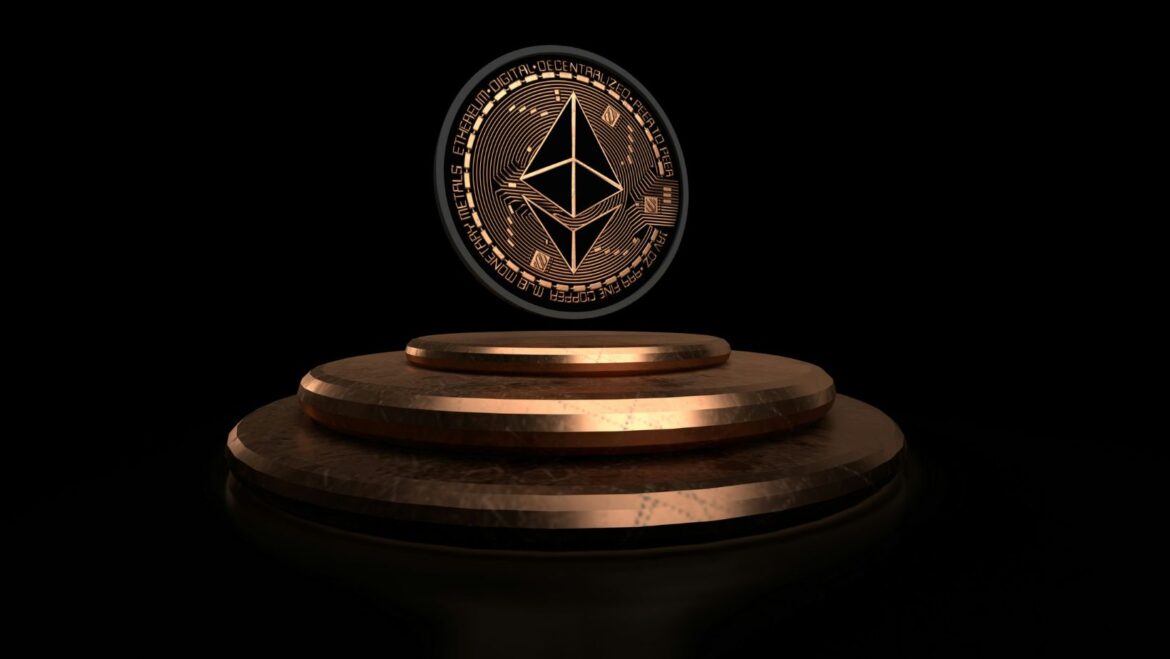Bitcoin is often referred to as digital gold because it tends to maintain its purchasing power over time. Although there are risks, such as price volatility and security concerns, Bitcoin has long-term investment merit and provides a unique source of diversification to portfolios. Conversely, Ethereum has been likened to digital oil, highlighting its role in serving as a strong foundation for many Web3 innovations, including the launch of stablecoins. Ethereum has undertaken ongoing technological developments aimed at enhancing security, scalability, and sustainability, enabling the technical infrastructure for tomorrow’s digital landscape.
Ethereum’s blockchain requires a native token – Ether – to execute every operation. Ethereum and Ether are often confused since they’re closely related, so when people talk about the ETH price prediction, they actually mean the future value of Ether, the cryptocurrency that powers the Ethereum blockchain. The Ethereum blockchain enables you to send transactions, deploy or invoke smart contracts, mint or trade non-fungible tokens (NFTs), and execute decentralized finance (DeFi) protocols. Developed in 2013, it has undergone a succession of both positive and negative experiences, including a hack in 2016 that led to a revision of the blockchain.
Conceptualizing Digital Oil: The Essential Properties That Make Ethereum A Strategic Resource
Just as oil is indispensable to the industrial age in many industries due to its versatility, Ethereum is integral to the digital age of decentralized applications and blockchain-based services, evolving into an operating system with the potential to impact finance, identity, culture, and infrastructure. The key characteristics of Ethereum as digital oil include but aren’t limited to:
- Programmability & Versatility
Beyond simple transactions, Ethereum enables complex applications via its smart contract functionality and Turing-complete platform. Users can build and run various applications, from games and advanced databases to platforms for lending and borrowing. Originally based on Proof of Work, Ethereum now runs on Proof of Stake, which allows for different customizations.
- Network Effect & Adoption
Ethereum’s value increases exponentially with more users, developers, and applications built on it. Each new participant creates new potential connections, compounding overall utility and creating growth in Ethereum’s economic value. Each new application developed on Ethereum can interact with existing ones through composability, allowing innovation to stack and compound without reinventing the wheel
- Security & Trustlessness
A robust and secure foundation is of the essence for digital value transfer and agreements. Ethereum stands as the leading smart contract platform, renowned for its unmatched security and decentralization. Traditional finance institutions are increasingly using Ethereum for various purposes, including tokenizing real-world assets and exploring cross-border payments.
The Pillars Of Ethereum: Understanding Its Core Capabilities
Ethereum has slowly but surely developed into a powerful, multi-layered blockchain platform with extensive capabilities that extend far beyond cryptocurrency transactions. It processes 15-30 transactions per second but capitalizes on Layer-2 rollups like Optimism or Arbitrum to increase capacity for the countless transactions. Developers prefer Ethereum due to its smart contract functionality and its active community that is constantly innovating and creating new tools and frameworks.
Here’s a comprehensive overview of its core strengths:
Smart Contracts
Ethereum isn’t the only blockchain that supports smart contracts, but it’s the dominant platform for self-executing digital agreements because it has a mature infrastructure, providing stability and reliability that other blockchains haven’t yet reached. Each contract is a piece of code and state deployed at a unique address, executing deterministically across thousands of nodes. Once a smart contract is deployed, its behavior becomes transparent, immutable, and censorship-resistant. The rules agreed upon self-enforce exactly as written. Smart contracts are a fundamental component of decentralized applications (dApps).
The Ethereum Virtual Machine
The Ethereum Virtual Machine (EVM) is a global, shared computing environment. Smart contracts written in Solidity, whether for crowdfunding or multi-signature wallets, are processed by the EVM, which handles state changes and executes transactions based on predetermined logic. It uses gas as a fundamental resource meter for computation. More exactly, each EVM opcode has a fixed gas cost based on its complexity. The EVM is contained within the client software that you need to run a node on Ethereum. Go (Geth) and Rust (Erigon) tend to prioritize raw throughput, while Java (Besu) and C# (Nethermind) focuses on enterprise features and modularity.
Decentralization And Security
Decentralization manifests itself in several strict dimensions, such as consensus, node diversity, client implementations, governance, and application development. Ethereum’s transition from Proof of Work to Proof of Stake has increased validator growth and distribution – at present, there are more than 400,000 active validators staking Ethereum, and Lido, the most significant liquid staking pool, comprises 30 independent node operators and more than 90,000 unique depositors. The blockchain’s validator set is more diverse and decentralized post-Merge. A 51% attack is highly improbable and very costly due to the Proof of Stake consensus mechanism.
The Established Network Effect
An established network effect materializes when a blockchain’s utility and value grow in a self-reinforcing cycle. To be more precise, each additional user makes the network more appealing to developers, and each new application draws in more users. In the context of Ethereum, this emerges as a dense ecosystem where wallets, DeFi protocols, NFT marketplaces, and decentralized autonomous organizations (DAOs) interoperate seamlessly, therefore amplifying the overall network effect. Ethereum exhibits Metcalfe-law-dynamics-value scaling roughly with the square of its active participants.
Ethereum Can Sustain And Grow Its Digital Oil Mantle For Years To Come
Ethereum faces competition from Solana, renowned for its fast and low-cost transactions, and Polygon, which supports Ethereum as a Layer-2 solution in scaling challenges, but it’s very well-positioned to maintain its dominance as the leading smart contract platform and the foundational layer for the new iteration of the World Wide Web. Ethereum is fast becoming the go-to infrastructure for tokenizing stocks, bonds, real estate, and so on. Its neutrality and programmability attract institutions like BlackRock and Franklin Templeton. With time, the rise of on-chain demand could outpace issuance, creating persistent deflationary pressure.
Ethereum’s future as digital oil depends on its ability to successfully scale while maintaining its developer ecosystem and network effects. The blockchain ecosystem is vast, which means there’s room for multiple ecosystems tailored to different needs.





